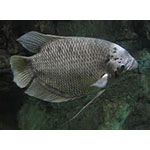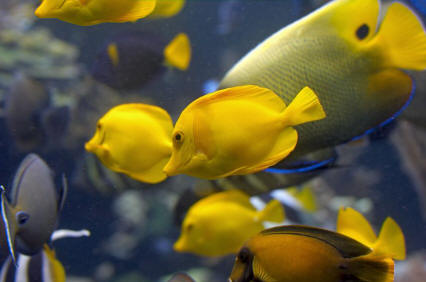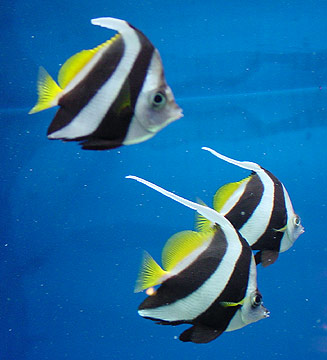Giant Gourami

|
Scientific Name: Osphronemus goramy Price: Upon Request Origin: Southeast Asia Family: Osphronemidae NOT AVAILABLE NOW |
|
Other Names: Osphronemus goramy |
|
Technical Info
Temperature: 25 - 29 ℃
pH: 6.8 - 7.5
GH: 4 - 10
Max size: 60 cm
Min Tank size: 800 Ltr
Position in Aqua: Top swimmer
Description
The Giant Gourami is laterally compressed with a deep bodied oval shape and a blunt head. As juveniles their head is flat and pointed, but as adults they develop a 'nuchal hump', a swollen knob or lump on the forehead, along with thick lips and a thick chin. The forehead of the male tends to be larger than on the female, while the lips of the female tend to be the thicker of the two. The ventral fins are threadlike. Like all other gouramis they have a special 'labyrinth organ' which enables them to survive in oxygen-depleted waters. This organ is a part of the fish which allows it to absorb atmospheric oxygen directly into the bloodstream by gulping air at the surface of the water.
Food
The Giant Gourami is omnivorous and prefers algae-based foods as well as meaty foods. An algae-based flake food, along with freeze-dried bloodworms, tubifex, and brine shrimp will provide these fish with the proper nutrition.
Breeding
The giant gourami is an egg layer, and the male will build a bubble nest before spawning. The male and female are distinguished by the dorsal fins and body color. The dorsal fin on the male ends in a point, and the body is darker changing to nearly black during spawning. When breeding, the water in the tank should be decreased to about 20 cm (8 in) deep and the temperature should be 28°C (82°F). After spawning, the female should be removed to a separate tank as the male will jealously guard the eggs, in a captive environment, sometimes becoming aggressive towards the female. The eggs hatch in 24 hours. They must be kept in a dark aquarium.
Compatible with
While small this species can be combined with most other medium-sized community fish. It grows quickly and gradually smaller tank mates may disappear. When the Giant Gourami reaches this stage, it is best combined with other large, peaceful fish. Suggested companions: Leporinus, Anostomus, Botia, Helostoma , Silver Dollars, Knifefish, Loricarids, Scleropages.

